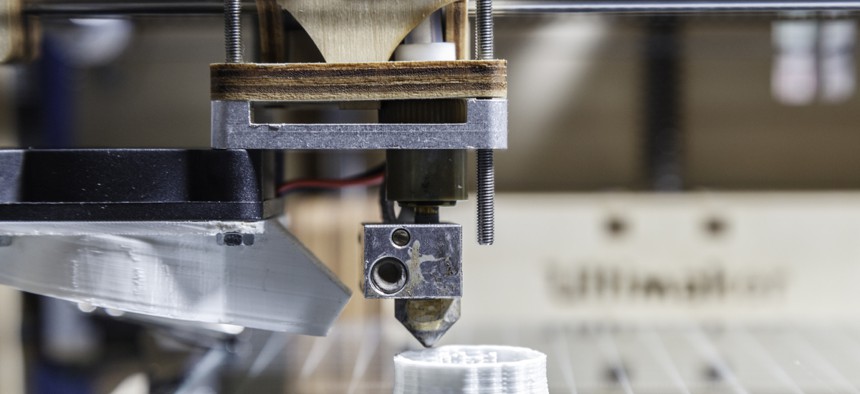VA Makes Moves to 3D Print and Produce Medical Devices In-House

Sergi Lopez Roig/Shutterstock
A newly unveiled effort will expand collaboration that was sparked by COVID-19.
The Veterans Health Administration’s sights are set on forming medical device manufacturing facilities—inside their hospitals—to push forward personalized patient care, and steer the production of health-related instruments from when they first emerge, through to the point when they’re fully cleared for use by the Food and Drug Administration.
Additive manufacturing solutions provider 3D Systems announced Thursday it’s linked up with the federal agency to advance the effort.
“Through this collaboration, 3D Systems will not only be installing 3D printers at the VHA sites, but we’ll also be helping them install a quality management system that includes the processes, documentation, and training required to be compliant as a medical device manufacturer,” Ben Johnson, the company’s director of product development, healthcare said in a statement.
3D Systems engineers and sells 3D printing software, hardware, services, materials, and more, and it’s been around for more than 30 years. It’s co-founder, Chuck Hall, is credited with first inventing stereolithography, a form of 3D printing.
In this VHA-led effort, 3D Systems will offer up its advanced printers and materials, as well as workflows and software to the agency. The business’ healthcare additive manufacturing team will also work directly with VHA to design medical devices and move them through FDA clearance.
“3D Systems’ application experts will initially manage the regulatory paperwork and development of a quality management system at VHA facilities, and over time will train the VHA teams to take ownership of the process,” the press release notes. “The training will also include how to run the quality management system, and how to complete product submissions for regulatory clearance.”
The move comes well after the Veterans Affairs Department and its components like VHA have recognized and pursued the promise 3D printing holds as a potential gamechanger in patient-centered care. An early adopter for the emerging and evolving printing technology, the agency now runs an integrated virtual printing network and has for years been experimenting with 3D printing things like prosthetic limbs, or actual replications of patients’ organs.
When COVID-19 hit, the agency also helped speedily launch a government-led 3D-printing partnership to make personal protective equipment-type designs and other medical supplies as supply chains were dangerously disrupted by the pandemic.
According to the release on the latest work, the agency also turned to 3D Systems around that time, when face masks were in high, hard-to-meet demand. Once the final design for those went into production, the company supported VA in the development of 3D-printed nasopharyngeal swab that could be manufactured on production level equipment. Experts from the company are working directly with VHA’s team both in the 3D System’s facilities and at the agency’s locations to help facilitate the onsight production of medical devices.
This new initiative builds on that collaboration.
“What began during the pandemic in response to a critical need has expanded to change the way healthcare is delivered,” Menno Ellis, 3D Systems executive vice president, healthcare solutions said.






